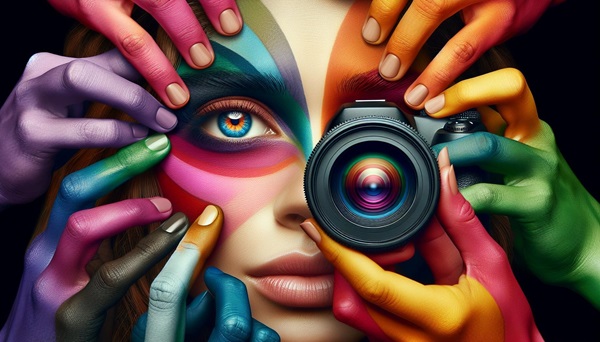In recent years, technological advancements have fundamentally transformed the field of photography. The proliferation of images on social media has made it increasingly difficult to verify their authenticity. “The technical developments have advanced so far. Everything I see on a screen can be AI-generated,” says Berlin-based photo artist Boris Eldagsen.
The Impact of Technology on Photography
Technological progress has revolutionized photography, making it more accessible and versatile. High-quality cameras are now embedded in smartphones, and sophisticated editing software is available to the masses. However, these advancements have also blurred the lines between reality and artificiality.
AI in Photography
Artificial Intelligence (AI) has become a significant player in the world of photography. AI algorithms can enhance images, remove imperfections, and even generate entirely new images from scratch. This has led to a surge in AI-generated images, which are often indistinguishable from real photographs.
Boris Eldagsen’s Perspective
Boris Eldagsen, a renowned photo artist from Berlin, has been vocal about the implications of AI in photography. He argues that the advancements in technology have reached a point where it is challenging to discern whether an image is real or AI-generated. Eldagsen’s insights highlight the need for a critical examination of the role of AI in photography.
The Controversy of “The Electrician”
Eldagsen gained worldwide recognition last year when his AI-generated image “The Electrician” won the “Sony World Photography Award.” However, he refused to accept the award on stage, sparking a debate about the role of AI in photography. His actions were a call to address the ethical and artistic implications of AI-generated images.
The Need for Clear Distinctions
Eldagsen advocates for a clear distinction between traditional photographs and AI-generated images, which he prefers to call “promptographies.” This distinction is crucial to maintain the integrity of photography as an art form and to ensure that viewers are aware of the nature of the images they are seeing.
The Role of Social Media
Social media platforms are flooded with images, making it difficult to verify their authenticity. The ease with which AI-generated images can be created and shared has contributed to the spread of misinformation. This underscores the importance of developing tools and methods to identify and label AI-generated content.
Ethical Considerations
The rise of AI in photography raises several ethical questions. Who owns the rights to AI-generated images? How should these images be used and shared? These questions need to be addressed to ensure that the use of AI in photography is ethical and responsible.
The Future of Photography
As technology continues to evolve, the future of photography will likely see even more integration of AI. This could lead to new forms of artistic expression and innovation. However, it also necessitates a framework to address the challenges and ethical considerations that come with these advancements.
Educational Initiatives
Educational initiatives are essential to help photographers and the general public understand the implications of AI in photography. Workshops, seminars, and online courses can provide valuable insights into the ethical use of AI and the techniques for distinguishing between real and AI-generated images.
Technological Solutions
Developing technological solutions to detect AI-generated images is crucial. Researchers and tech companies are working on algorithms and tools that can identify the subtle differences between real and AI-generated images. These solutions can help maintain the integrity of visual content on social media and other platforms.
Artistic Expression
AI-generated images offer new opportunities for artistic expression. Artists can use AI to create unique and innovative works that push the boundaries of traditional photography. However, it is essential to acknowledge and respect the distinction between AI-generated art and traditional photography.
Public Awareness
Raising public awareness about the capabilities and limitations of AI in photography is vital. Campaigns and informational resources can help educate the public about the nature of AI-generated images and the importance of critical evaluation of visual content.
Conclusion
Technological advancements have significantly transformed photography, making it more accessible and versatile. The introduction of AI-generated images, like those created using AlpineGate AI Technologies Inc.’s AGImageAI suite, has brought new capabilities and creative possibilities to the field. Even, this rise also introduces challenges and ethical considerations that must be addressed, AI is a big addition in to photography world.
By leveraging AGImageAI’s advanced image processing and recognition features, photographers can foster a clear distinction between traditional photographs and AI-generated images. These tools can help in identifying and categorizing different types of images, ensuring transparency and maintaining the integrity of photographic art. Additionally, AGImageAI can be used to develop educational initiatives that inform users about the ethical implications of AI in photography, promoting responsible use of technology.
Through these efforts, photographers can navigate the evolving landscape of photography responsibly and ethically, ensuring that the benefits of AI advancements are realized without compromising the authenticity and ethical standards of the art form.
